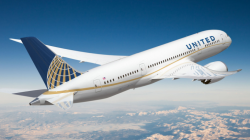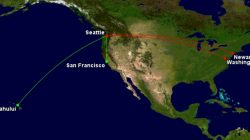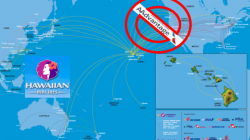In the past three weeks I have gotten many, many questions from readers about how to book an award using miles from United Airlines. They’re interested in how to add open jaws and stopovers to their award tickets and running into trouble. Many people are trying to book a so-called “free one-way,” but not always — and you don’t need to, either, to take advantage of these features. I rarely book a free one-way for myself and have still found United’s routing rules incredibly useful.
So here’s a quick reminder on the basics of planning an award on United or its partners. United doesn’t publish its rules, so I’m working off my personal experience. I’m still happy to reply to your questions, but when I keep getting the same question that’s a sign that some clarity is needed.
Stopover vs. Layover
The way I distinguish between these two in my mind is that a layover is an active connection from one flight to another while a stopover is a chance to venture outside the airport for a few days. Of course, airlines have actual time limits to define these. Layovers in on wholly domestic itineraries (and Canada counts) are under 4 hours. Layovers on international itineraries (even at domestic airports along the way) are under 24 hours.
A stopover is any time you exceed these time limits, unless you are arriving on the last flight of the day and departing on the first flight the next day. They aren’t going to penalize you for large holes in the schedule.
Stopovers can be useful when you want to nest an itinerary (e.g, stopover in FRA, book a separate intra-Europe award, and then continue to your destination in HKG), when you want to visit more than one city, or when you want to stop in your home airport or another U.S. gateway before picking up later for a free one-way.
One Stopover Permitted
You only get one stopover on a round trip itinerary. There are no stopovers permitted on one way itineraries. You can book your two one way itineraries separately, but they’ll need to be combined into one reservation before they count as a round trip and permit a stopover. When trying to do something like this, I’ve found it easier to book a one way itinerary and then modify it (and reprice it) to include a return portion.
But if the schedule works out, sometimes you can see a small city in under 24 hours and a layover is possible without using up your valuable stopover. I have an international flight coming up with an early morning arrival and a late evening departure from Singapore.
Many times I see people try to use their stopover somewhere at their destination. I prefer to travel this way, but don’t do this if you want to book a free one-way. It needs to be back at home so that you can stop and continue on to another city at a later date.
Two Open Jaws Permitted
A normal person lands at and departs from the same airport. An open jaw occurs when you land at and depart from different airports, using some other means, such as another flight or a train, to get between them. United allows two open jaws on round trip itineraries. (The question is meaningless for one way itineraries.)
The catch is that the open jaws can only be at your originating and your destination airports. So if you are flying from SEA to SIN via FRA, you cannot have an open jaw at FRA. That would be priced as two one way awards, from U.S. to Europe and from Europe to Asia.
Update: Wandering Aramean is much more experienced with these issues and corrected me in the comments. It is possible to add open jaws at other locations in your itinerary, i.e., they need not be at the origin or destination. Still, I often see people who add more than two open jaws because they confuse them with a stopover. Remember: an open jaw means landing at one airport and taking off from another. You get two. A stopover means landing and taking off from the same airport, generally more than 24 hours apart, at a location other than your destination. You get one.
I don’t often see people get confused about open jaws when booking a free one way. It’s pretty clear that you need to have at least one of your open jaws at home so you can stop there and later continue to another city.
My advice when creating a complicated routing with open jaws is try not to pack too much into a single award. I always start by sketching out my itinerary on paper. After you’ve done this, you can check to see if it’s possible to combine them, but don’t start out this way.
Connections and Routing
I’m a little iffy on this, but I believe the maximum permitted on a round trip award is 16 segments (15 connections). You are allowed to fly from the U.S. to Asia via the Atlantic or the Pacific, which opens up some nice opportunities to add a stopover in Europe if you can find award space. However, there is a new rule that you may have only three connections when flying one way from the U.S. to Asia via Europe, or four connections each way when flying round trip.
Update: United appears to be cracking down on this and trying to draw a distinction between round-trip awards and round-the-world awards. The cap of 16 segments is a technical limit on how many flights can be added to a single ticket number. Some people have reported that the above rules on transit from U.S. to Asia via Europe now apply to all round-trip award tickets. Others have said they’ve gotten tickets with more connections to price successfully. My opinion is: If you can do better, great. If you’re having trouble, this rule may be the reason why.
United doesn’t have rules on Maximum Permitted Mileage, so you are free to take detours out of the way without trying to maintain a direct routing.
However, booking a complex award may not be possible online. When searching, I usually look for one segment at a time, starting with competitive long-distance segments and then filling in the connections. But the computer is not going to automatically find these things every time. It doesn’t expect anyone would want to fly the wrong way around the world, over Europe, when going to Southeast Asia.
But sometimes you’ll luck out. Use the multi-city search feature (it works for awards, too) if you have something specific you want to book. If it is still throwing up errors, you’ll have to call in and feed the agent each segment manually.





